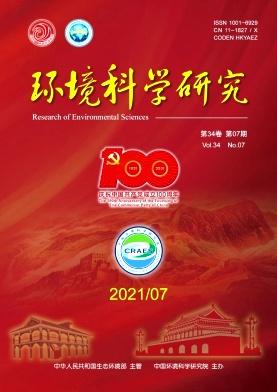{"title":"历史传染病环境气候特征初探及对新冠肺炎疫情的几点思考","authors":"Ying Wang, Dingyuan Liang, Yao Li, Zhang Haowen, W. Fan, Fengchang Wu","doi":"10.13198/J.ISSN.1001-6929.2020.05.46","DOIUrl":null,"url":null,"abstract":"The outbreak and pandemic of COVID-19 pose a serious threat to the safety of human society and examine the ability of public health care resources around the world to deal with the large sudden infectious diseases A review on the environmental and climatic characteristics related to historical infectious diseases will shed immediate light on the scientific research and control of COVID-19 Our results show that: (1) Historically, outbreaks of human-to-human coronavirus and orthomyxoviridae infectious diseases mainly occurred in the subtropical monsoon climate of the northern hemisphere in the winter and spring, while the outbreaks of flaviridae infectious diseases mostly occurred in tropical regions in hot and rainy summer and autumn (2) Global warming and extreme weather may exacerbate the outbreak and spread of infectious diseases (3) The impact of human activities on the ecosystem balance forces the habitat migration of virus hosts and the aggregation of different virus hosts, increasing the probability of virus mutation and the risk of infectious disease outbreaks The lessons from historical outbreak of infectious diseases suggest that suitable climate factors might be conducive to the outbreak and epidemics, while the outbreaks in tropical countries also indicate that it is necessary to scrutinize the roles of climate, environmental conditions and ecological factors in the global wave of COVID-19 Our study provides some useful insights for the prevention and control of COVID-19 plague and other potential pandemics in the future © 2020, Editorial Board, Research of Environmental Sciences All right reserved","PeriodicalId":21108,"journal":{"name":"环境科学研究","volume":null,"pages":null},"PeriodicalIF":0.0000,"publicationDate":"2020-07-01","publicationTypes":"Journal Article","fieldsOfStudy":null,"isOpenAccess":false,"openAccessPdf":"","citationCount":"2","resultStr":"{\"title\":\"Preliminary Study on Environmental and Climatic Characteristics of Historical Infectious Diseases and Some Thoughts of COVID-19\",\"authors\":\"Ying Wang, Dingyuan Liang, Yao Li, Zhang Haowen, W. Fan, Fengchang Wu\",\"doi\":\"10.13198/J.ISSN.1001-6929.2020.05.46\",\"DOIUrl\":null,\"url\":null,\"abstract\":\"The outbreak and pandemic of COVID-19 pose a serious threat to the safety of human society and examine the ability of public health care resources around the world to deal with the large sudden infectious diseases A review on the environmental and climatic characteristics related to historical infectious diseases will shed immediate light on the scientific research and control of COVID-19 Our results show that: (1) Historically, outbreaks of human-to-human coronavirus and orthomyxoviridae infectious diseases mainly occurred in the subtropical monsoon climate of the northern hemisphere in the winter and spring, while the outbreaks of flaviridae infectious diseases mostly occurred in tropical regions in hot and rainy summer and autumn (2) Global warming and extreme weather may exacerbate the outbreak and spread of infectious diseases (3) The impact of human activities on the ecosystem balance forces the habitat migration of virus hosts and the aggregation of different virus hosts, increasing the probability of virus mutation and the risk of infectious disease outbreaks The lessons from historical outbreak of infectious diseases suggest that suitable climate factors might be conducive to the outbreak and epidemics, while the outbreaks in tropical countries also indicate that it is necessary to scrutinize the roles of climate, environmental conditions and ecological factors in the global wave of COVID-19 Our study provides some useful insights for the prevention and control of COVID-19 plague and other potential pandemics in the future © 2020, Editorial Board, Research of Environmental Sciences All right reserved\",\"PeriodicalId\":21108,\"journal\":{\"name\":\"环境科学研究\",\"volume\":null,\"pages\":null},\"PeriodicalIF\":0.0000,\"publicationDate\":\"2020-07-01\",\"publicationTypes\":\"Journal Article\",\"fieldsOfStudy\":null,\"isOpenAccess\":false,\"openAccessPdf\":\"\",\"citationCount\":\"2\",\"resultStr\":null,\"platform\":\"Semanticscholar\",\"paperid\":null,\"PeriodicalName\":\"环境科学研究\",\"FirstCategoryId\":\"1087\",\"ListUrlMain\":\"https://doi.org/10.13198/J.ISSN.1001-6929.2020.05.46\",\"RegionNum\":0,\"RegionCategory\":null,\"ArticlePicture\":[],\"TitleCN\":null,\"AbstractTextCN\":null,\"PMCID\":null,\"EPubDate\":\"\",\"PubModel\":\"\",\"JCR\":\"Q2\",\"JCRName\":\"Environmental Science\",\"Score\":null,\"Total\":0}","platform":"Semanticscholar","paperid":null,"PeriodicalName":"环境科学研究","FirstCategoryId":"1087","ListUrlMain":"https://doi.org/10.13198/J.ISSN.1001-6929.2020.05.46","RegionNum":0,"RegionCategory":null,"ArticlePicture":[],"TitleCN":null,"AbstractTextCN":null,"PMCID":null,"EPubDate":"","PubModel":"","JCR":"Q2","JCRName":"Environmental Science","Score":null,"Total":0}
引用次数: 2


